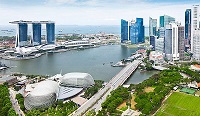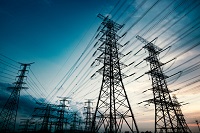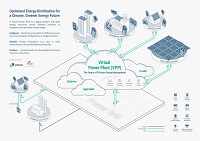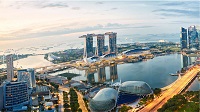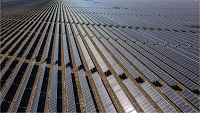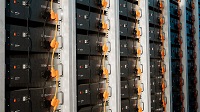A Singapore Government Agency WebsiteHow to identify
Official website links end with .gov.sg
Government agencies communicate via .gov.sg websites
(e.g. go.gov.sg/open).Trusted websites
Secure websites use HTTPS
Look for a lock ( )or https:// as an added precaution. Share sensitive information only on official, secure websites.
IN "IMPROVING efficiency should be first step" (Dec 17), Mr Glen Yang asked how the formula for the electricity tariff took into account the efficiency and productivity of the power generation companies (gencos).
The capital and operating costs used in the tariff formula are reviewed every two years by the Energy Market Authority (EMA). In each round of review, EMA will compare the overall costs against international benchmarks and reset the cost level to that of a power plant with the most efficient generation technology.
This process helps to drive efficiency gains in the gencos and ensures that the savings achieved are shared with all consumers. For example, the non-fuel costs were revised downwards by 18 per cent in January 2005 after the benchmarking exercise.
Between these biennial reviews, the cost components are adjusted every quarter to take inflation into account. Mr Yang questioned the basis for doing so as he mistakenly thought that the older equipment in the gencos had fully depreciated in cost. But the gencos have to continually upgrade their plants and invest in new capacity to cope with the growing demand for electricity. Hence, it is reasonable to make some provision for inflation in the tariff formula.
Mr Yang suggested removing the Energy Market Company (EMC) and the Power System Operator (PSO) so as to further reduce the tariff. But the EMC and PSO are not "middlemen" with unnecessary administrative overheads. The EMC operates and runs the wholesale electricity market, while the PSO maintains the security and reliability of our electricity supply. These are critical and essential functions in any power system. Furthermore, the fees charged by EMC and PSO, which constitute about 0.2 per cent of the tariff, are low compared to other jurisdictions.
Mr Yang also asked for details of the formula used for the Vesting Contract Hedge Price. This is already available at the EMA website. We thank Mr Yang for his feedback and invite him to contact us directly if he needs further clarifications.
Improving efficiency should be first step (Today)
ACCORDING to Ms Jenny Teo from the Energy Market Authority (EMA), "While the fuel cost has come down due to the decline in fuel oil price, the non-fuel cost, which includes the operating and capital costs of the power plant, has increased due to inflation" ("Doing the power math", Dec 16).
I believe that all power plants and most of the gas piping and other such infrastructure in Singapore, as well as the feed pipe systems here, were built some time ago. Hence, the bulk of the hardware has already been budgeted and paid for prior to the recent material/oil price increase.
Furthermore, as a capital cost, equipment owned by power generating companies over these years should have depreciated in cost. Therefore, it runs contrary to the notion that power plants' capital costs have increased due to inflation. On the other hand, assets held under these power companies may have increased due to inflation.
Next, let's look at operating costs, which are derived as a measure of productivity and expenses. While expenses may rise due to inflation, productivity may not necessarily do so. It depends on how efficiently the shop floor is being managed. Perhaps spare parts price for maintaining the infrastructure may have increased, but surely that is a cost power companies have to shoulder based on profits generated by their own marketing/sales/efficiency efforts, and not by raising tariffs. Have the companies considered improving their productivity and efficiency further to reduce overheads?
Does the EMA assess the power companies' productivity and efficiency in managing their overheads to reduce the cost burdens in generating and transporting electricity, before they decide to approve tariff increases to end-consumers?
Lastly, I understand that the wholesale electricity price comprises of Energy Market Company admin charges, Power System Operator charges and other unit rates. Maybe if we remove these middlemen and their administrative charges in this free market, the tariffs can be reduced further, not increase. Perhaps the EMA should also publish how their formula for Vesting Contract Hedge Price is being derived for hedging their wholesale fuel cost. As already highlighted by others, fuel costs have dropped.
Glen Yang
